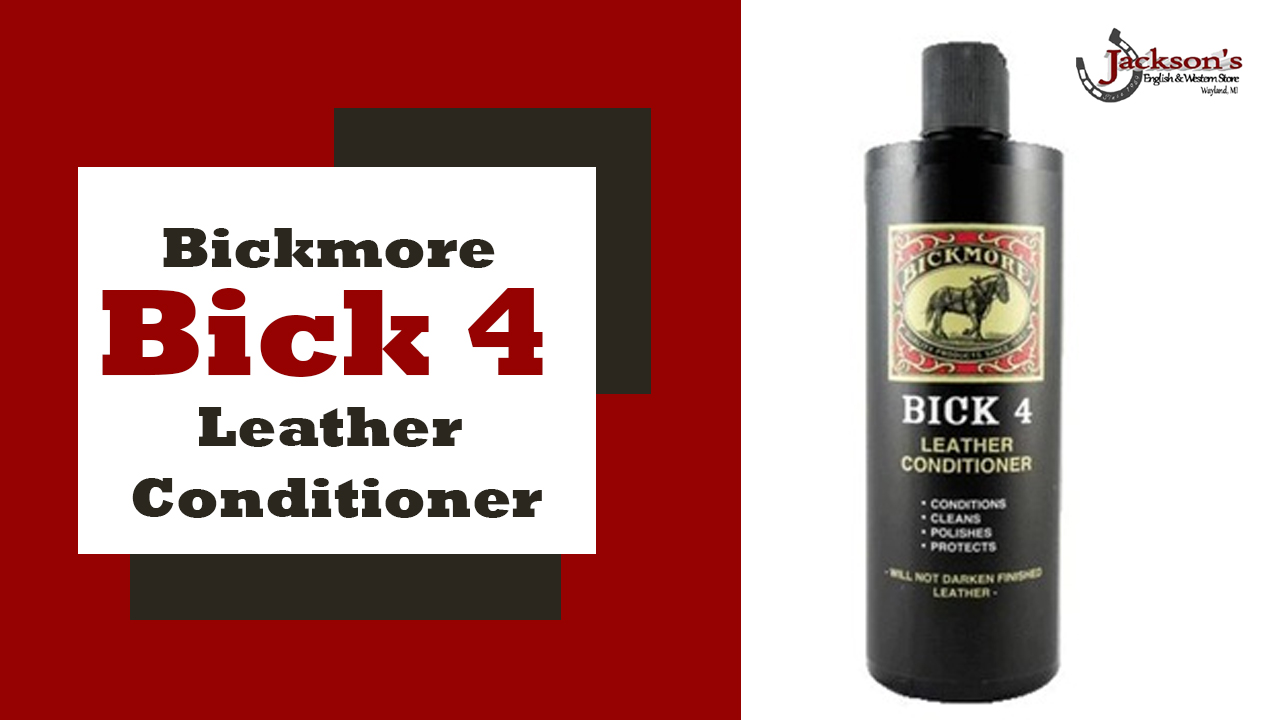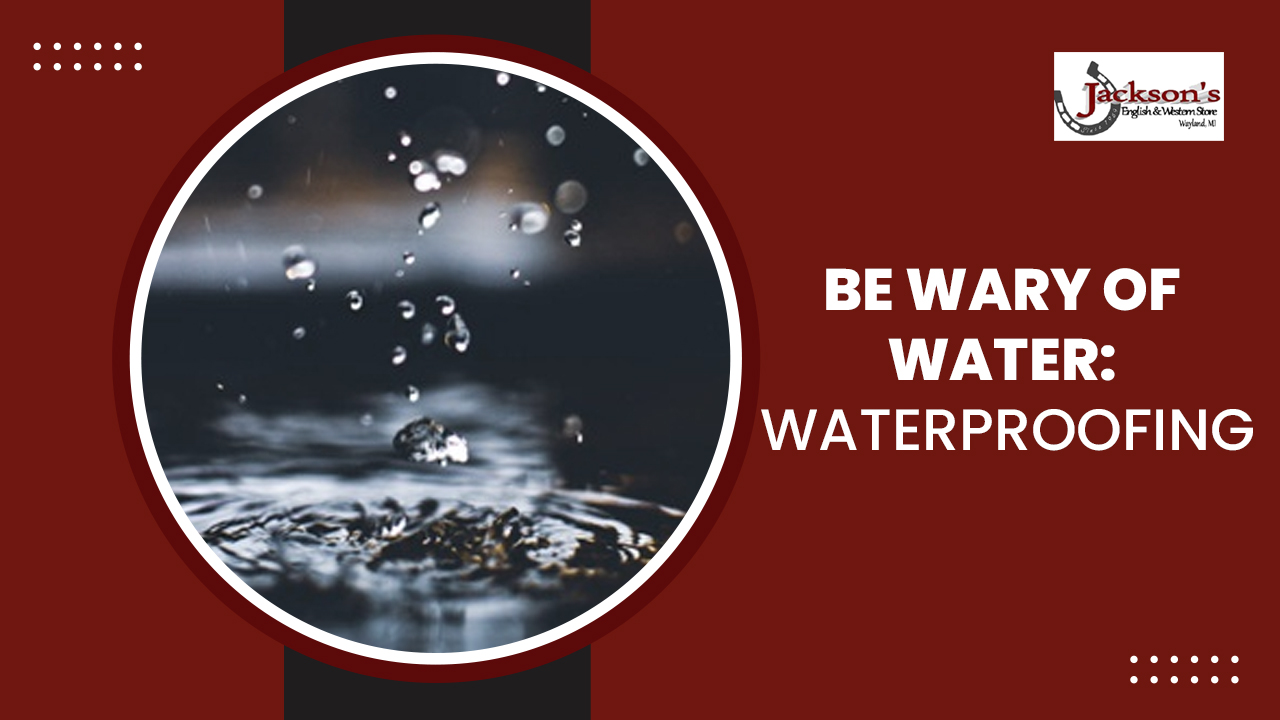A Quick Guide To Maintaining Ariat Square-Toed Boots For Long-lasting Wear
Posted by Jackson's Western Store on Mar 09, 2021

Any of you reading this who are now the proud
owner of a brand new pair of Ariat square toe boots or other Ariat western boots, congratulations! You now own
some of the finest western boots in the entire industry. Built on a history of
commitment to quality and innovation, Ariat boots are comfortable, ergonomic,
include various athletic technology in their construction, and look pretty
slick, too.
They’re built to last for many years, too, but don’t kid yourself. Tough as they are, like all fine pieces of art and equipment they require the proper care and attention to go the distance. They’ll keep you warm in the cold, comfortable through long hours on your feet, and protected against the conditions of the field, but if you want them to last the way they were intended to, follow some of these tips for care.
How to break in your Ariat Boots
When you get a new pair of western boots, the first thing you’ll want to do after admiring them for a few moments is to get started breaking them in. It’s no secret that western boots are remarkably comfortable and give their owners a fit that can only be described as custom-tailored, but they don’t come that way. When you first get any quality pair of western boots (Ariats included) they’re stiff, uncomfortable, and will probably pinch you smartly.
It all starts with the process of breaking them in. To tell the truth, there are as many proposed methods for breaking in a new pair of western boots as there are anecdotal cures for a toothache, but not all of them are advisable.
For example, some people will tell you that hot water (or just water) or steam will help you form the boots. It will, but it can also damage the leather. Others will tell you to wear several pairs of socks when you wear your boots for the first few weeks, as this will exert extra pressure on them so they become softer and more accommodating faster. There are other methods floating around out there, but we’re going to suggest the most basic of the bunch.
The most basic and possibly the most effective way to break your boots in is to actually use them for what they were intended for. Yes, it will be uncomfortable for a few days or a week, and there’s nothing wrong with giving it a rest halfway along the journey so you don’t get too blistered or beat up, but it’s also the best way to get that perfect fit and comfort.
Put on your boots and take them out in the field or wear them for a day of walking or hiking or work - whatever you plan to do with them. Walk, kneel, stretch, reach - go about your day and don’t go easy on your boots. The harder you are on them, the faster they’ll break-in, but remember, it’s still going to take a few days of constant, hard wear, if not longer.
Of course, you could just start out the right way and have us break in your new boots for you. It’s a free service that we offer with each and every pair of western boots we sell - but you have to carve out some time to come visit us in Wayland, Michigan if you want to take us up on it. We also offer free fitting and stretching with the purchase of a pair of boots, too, so you can walk right on out of our store with that custom-feeling fit.
Still, if your heart’s set on a new pair and you’re not in our neck of the woods, just follow our advice above. In just a few days or weeks you’ll have a pair of boots that feel like they were made just for you: form-fitting, comfortable, and supportive.
How to Keep Your Ariat Square Toe Boots Clean
Once your new boots are broken in, you can enjoy that comfortable fit and support, but now you’re going to need to learn how to take care of your boots. The thing about breaking boots in is that you’re going to stretch the leather fibers and you’re actually going to tear and damage some of them. You won’t be able to notice this because it happens on a microscopic level, and despite the fact that it sounds like a bad thing, it’s actually the reason that stiff, new boots become comfortable in the first place.
However, breaking the leather down a little bit means you need to take extra care to preserve it. The first, most casual step in boot care and maintenance is keeping them clean. It’s also the process that you’ll have to follow most of the time.
Whenever your boots get dirty, you should take the time to clean them off, although you shouldn’t wait for them to get dirty. Developing a routine will help to keep you on a schedule and to ensure that your boots are well cared for, for years to come.
Luckily, cleaning your boots doesn’t have to be a real challenge. Also lucky for you, western boots, including many Ariat square toe boots, are without tongues and laces, which gives dirt, salt, and other debris less refuge. However, the seams and stitching pattern can still harbor these nefarious particles, so you need to take care to remove them periodically.
Take off your boots and inspect them. You’ll probably notice that there is a fine dusting of dirt, sand, or dust on them. If you wear them in the field or in a barn, you’ll notice that fine plant fibers and other organic debris can get trapped on the surface of the boot or in the seams. Even this material, which carries moisture, can be damaging to leather if allowed to remain in place.
Luckily, keeping them clean is not particularly difficult. All you need (except for the dirtiest of boots) is a coarse brush like a horsehair or boar bristle brush and perhaps a damp - not wet - rag.
Some of the time, all you’ll need to do is dislodge the dirt, sand, or other organic material so that it falls away from the boot. It can really be as simple as that. Pay close attention to the seams and stitching and really work the bristles in there. Also, be careful around the welt stitching; dust and dirt accumulate there and must be removed. Sand and dirt, in particular, can abrade stitching over time and will hasten the deterioration of your boots.
The purpose of the damp - again, not wet - rag is to coax out more stubborn bits of mud and other dried on materials, like salt. The point here is to dissolve and wipe away anything that remains on the surface of the leather without overexposing it to moisture. The boots themselves may be waterproof, but leather is absorbent and exposure to water can cause fading, discoloration, undue stretching or shrinking, or worse, cracking.
Once the surface of your boots has been restored to their fresh, clean condition, you’re good to go for another week or so, or at least till they get dirty again.
How to Treat Your Ariat Square Toe Boots Periodically
Now comes the pivotal aspect of leather maintenance. You need to keep the leather hydrated without overdoing it, or else you can run into a host of problems. Excessively dry, unconditioned leather is subject to a number of problems including the following:
●Shrinking
●Breaking or cracking
●Delaminating
These are some of the biggest problems associated with excessively dry leather, although there are others. Also, unfortunately, once these issues occur, there’s no way to reverse the damage.
On the flip side, leather that is repeatedly allowed to absorb water and then dry out, as well as leather that is excessively treated with oils or other conditioners is also subject to additional problems including:
●Discoloration
●Loss of strength
●Stretching and reforming into uncomfortable shapes or positions
●Oxidation and natural decay

The trick is to balance your use of treatments so that your leather stays supple and is best able to stave off natural deterioration. This requires a bit of a balancing act.
There are quite a few leather conditioners out there. These include mink oil, neatsfoot oil, homemade combinations of beeswax and other natural oils, and even commercially available treatments like Obenauf’s, Leather Honey, and Bickmore Bick 4 Leather Conditioner, which does not discolor leather, does not leave a residue, and cleans, conditions and protects.
Each of them is beneficial to leather in its own right, provided it’s not used excessively. Additionally, opinions on the best oils or conditioners to use will vary; the best teachers are trial and error. Experience is key.
What we can tell you is that you should text the conditioner you intend to use on an inconspicuous area of the boot as the color of the leather may darken in response to it. Additionally, make certain that the conditioner you are going to use is rated safe for stitching, as some conditioners contain acids and other compounds that, while they don’t damage leather, do damage stitching.
Once you’ve tested the conditioner to ensure that it doesn’t change the nature of your boots’ color too much, all you’ll need is a soft rag or sponge. Work some of the oil or conditioner into the sponge or rag and then buff it into the leather. Don’t apply so much that the leather is slick or shiny with the treatment; leather is absorbent and will continue to accept oil until it is sopping wet. This, however, is bad for the leather.
Apply only a nominal amount until the leather softens slightly to the touch. Work it into the seams and around the stitching, and wipe away any excess.
This is a ritual that you should perform about once per month for boots that see hard use, although you can do it more frequently if your boots’ leather has dried out excessively.
How to Waterproof Your Ariat Boots

Just keeping your boots clean and well-conditioned on a regular basis will go a long way towards preserving their integrity and ensuring that they last for many seasons. However, there is one thing else to remember, and that is that water is not a friend to leather.
Regardless of whether or not the boots are waterproof, leather is absorbent. When you treat your leather with oil or conditioner, its presence in the leather will help displace water and prevent water from entering the leather’s fibers - but only to a degree.
Any time your boots become waterlogged, fight the temptation to dry them off quickly. This is actually one of the most damaging things you can do to leather, as leather that is dried rapidly will shrink and crack. It’s actually best to give the leather a while to slowly dry out under natural (or simulated natural) conditions.
However, what you can do to help prevent this is to treat the leather of your boots with a waterproofing agent. There are several ways to go about this. You can use a commercial waterproofing spray (provided the manufacturer’s instructions list it as safe for use with leather) you can use a wax-based finish, or you can treat the boots with a beeswax coating.
Apply these as you would apply oil or conditioner, and be sparing. Also, if you do choose to waterproof your boots, make sure you refresh the coating periodically, as it will break down and the leather will become susceptible to absorbing moisture once more.
Otherwise, just be prudent when you expose your
boots to water, don’t allow them to dry too quickly, and keep the leather
supple with regular treatments.
How to Store your Ariat Square Toe Boots
Storing boots properly, along with regular care, will keep them alive for a long time. Make sure your boots stay well-conditioned by ensuring they are stored upright, either by using boot trees or filling in the shaft with newspaper and tissue papers. This keeps them straight and prevents creases on the leather. Leather can lose some of its color and dry out due to sunlight exposure for a long period, so keep them in a cool place that is free from moisture when they are not in use. This way, neither moisture nor heat causes harm to the leather, warping, or cracking. And, for more protection, store them in a dust bag or box to keep them protected from dust and dirt. So, as long as these simple storage tips are followed, your boots always remain set for any hiking trips to come.
We Can Start You Off Right
Since western boots are a staple of western wear for women as well as western wear for men, you’ll be happy to know that caring for leather Ariat square toe boots is not different from caring for any other leather boots, whether they’re boots for men, boots for women or even children’s boots.
Follow these tips for care and your boots will last for many enjoyable seasons - and if you have any questions, give us a call at 269-792-2550; we’d be happy to answer them for you!

